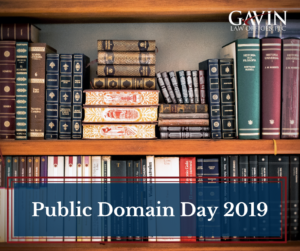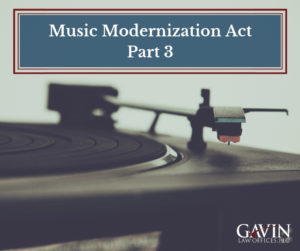Rina Van Orden sat down with Taylor Quinn from Filmspire to chat about how Gavin Law Offices assists clients in protecting their intellectual property and navigate the legal landscape during these changing times.
Copyright
IP Rights in Halloween Costumes
When I was growing up, I, like many children, wore homemade costumes of my favorite characters for Halloween – saving my parents money versus the store-bought alternatives, but certainly costing my mother time. With a rise in intellectual property protection efforts by companies large and small in recent years, you may be wondering if your handmade creations might put you at risk for an infringement claim from one of the more over-zealous intellectual property enforcers (here’s looking at you, Disney). As a lawyer, I am nigh physically incapable of saying “have no fear,” but I think I’m comfortable with a reassuring “have very little fear!”
The four areas of intellectual property protection that could apply to a Halloween costume are publicity rights and trademark, copyright, and patent protection. I will address each in turn:
Publicity Rights
Should your costume include elements that could be used to identify a particular person, you may be violating such person’s publicity rights. For example, a costume of Albert Einstein was the subject of a publicity rights lawsuit in 2010. Publicity rights laws vary from state to state, and typically prevent unauthorized reproduction or use of a person’s likeness (which may include name, image, portrait, picture, signature, or other identifying elements) for commercial or advertising purposes. The purpose of such laws is to prevent unauthorized parties from trading off the likeness of others without fair compensation. Therefore, unless you plan on using your homemade costume in an advertising (e.g. in an advertisement for your small business) or commercial (e.g. manufacturing, producing, or selling your costumes) sense, you are likely not at risk for violating your costume subject’s publicity rights.
Trademark
Trademark owners have an affirmative duty to police their marks against unauthorized use by a third party. However, trademarks by their definition are used as source identifiers for goods or services being sold in commerce. Like the commercial and advertising aspects discussed above regarding publicity rights, trademark protection seeks to prevent parties from benefiting or trading off the trademarks of others for financial or reputational gain. Thus, recreating a protected design, logo, image, etc. in a homemade costume that will be used for personal use only (and likely for one night only), presents very minimal risk of liability for trademark infringement.
Copyright
Unlike publicity rights and trademark laws, federal copyright protection extends to any reproduction of a protected work. However, the Copyright Act specifically carves out exceptions for “fair use” reproductions. Surprisingly, Halloween costumes are not directly addressed; however, the statutory factors to be considered in determining whether or not a fair use exception applies include “the purpose and character of the use, including whether such use is of a commercial purpose;” and, “the effect of the use on the potential market for or value of the copyrighted work.” 17 U.S.C. § 107(1), (4). Again, the law focuses on commercial, rather than personal, use of the potentially infringing work. Also, practically speaking, damages in many copyright claims are based on lost profits to the copyright owner, meaning sales of the infringing work that should be attributed to the rightful copyright holder. Again, so long as your costume is made and used for your or your family’s personal use only, your use of the copyrighted material is very likely a “fair use.”
Patent
Patents prohibit any recreation of the patented design and, in general, apply to innovative designs. This may sometimes apply to costumes. For example, a patent exists for a costume that can be modified for comfort according to the outside temperature. The U.S. laws concerning patents also consider what are known as “design patents.” Design patents lack the exception of fair use but are only in effect for fourteen (14) years, and only protect unique and original designs separate and apart from a functional aspect of a costume. This mains that no one can have a patent on a purple suit, but could have a design patent on a distinctive and ornamental patterned suit. While it is unlikely that your recreated costume would run afoul of a design patent, the possibility is higher than in the other areas discussed above, particularly as there is no exception or commercial requirement. The practical risk is even lower, as patent owners are unlikely to be patrolling neighborhoods (outside of their own trick-or-treating efforts) looking for infringers. Furthermore, design patents are not the preferred method of protection in many cases, as the protection expires after a much shorter period (consider the fact that patent protection for designs is only 14 years, versus the “lifetime of author plus 75 years” protection applied to copyrights).
Conclusion
Avoid the urge to market, mass produce, and sell your wonderful homemade “wears” and devote the energy you may have used worrying about infringing on Marvel’s intellectual property to how many candy corns you can fit in your mouth at one time! This author is pro-candy corn, but if that offends you to your core, consider Skittles and/or M&Ms instead. Happy Halloween!
-Fred Freeman, Esq.
U.S. Supreme Court decision may impact your copyright registration strategy
| The U.S. Supreme Court ruled last week that copyright owners may now only file suit only after a copyright registration issues for the work in question. This ruling reverses the view previously held in certain federal circuits, including the 4th Circuit, which includes Virginia.
Because the copyright registration process can prove lengthy, we recommend that copyright owners file to register valuable works as soon as possible after creation in order to take legal action expeditiously when the need arises. For further information regarding registration of your copyright-able works and/or the benefits of registration, please feel free to contact us. |
Public Domain Day 2019
 Happy New Year, Gavin Law followers!
Happy New Year, Gavin Law followers!
Some people think the most wonderful time of the year is Christmas, but starting 2019, we are going to receive gifts every January 1st. Why is that, you ask?
Previously copyrighted works are starting to enter the public domain again! No copyrighted works have entered the public domain since January 1st, 1998, so this is a truly momentous occasion.
What does it mean for a work to enter the public domain?
To start, copyrights give a certain amount of protection to their owners, but do eventually expire. When a work reaches the end of its term (either by expiration, abandonment, or lack of protection), it enters the public domain. The public domain is full of beautiful creative works of originality that can be used by ANYONE, without fear of infringing copyrights in these works. Some examples of works famously in the public domain are works of Shakespeare. This is why we have so many Shakespeare-based derivative films, such as Romeo and Juliet, or Rosencrantz and Guildenstern Are Dead. Because Jane Austen’s works are in the public domain, we have Pride and Prejudice and Zombies! Works that enter into the public domain often feed the creativity of new artists.
How long do copyrights last, anyways?
The term of copyright for a particular work depends on several factors, including whether it has been published, and, if so, the date of first publication. As a general rule, for works created after January 1, 1978, copyright protection lasts for the life of the author plus an additional 70 years. For an anonymous work, a pseudonymous work, or a work made for hire, the copyright endures for a term of 95 years from the year of its first publication or a term of 120 years from the year of its creation, whichever expires first. For works first published prior to 1978, the term will vary depending on several factors.
Why did works stop entering the public domain 20 years ago?
In 1998, Congress passed the Sonny Bono Copyright Term Extension Act, which effectively added twenty-one years of protection to works that were under the protection of copyright law. This Act was incredibly controversial, and many believed that Disney lobbyists were the driving motivator behind the Act, as a copyright on Mickey Mouse was due to expire. Works created in 1923 or later were therefore set to enter the public domain, not in 1998, but in 2019.
What works enter the public domain this year?
A variety of works enter the public domain, including the below that are particularly exciting. However, Duke has published the full list, which you should feel free to peruse here: https://law.duke.edu/cspd/publicdomainday/2019/.
- Tarzan and the Golden Lion, by Edgar Rice Burroughs
- The Inimitable Jeeves, by P.G. Wodehouse
- Stopping by Woods on a Snowy Evening, by Robert Frost
- Don Quixote, by Miguel Cervantes
- The Ego and the Id, by Sigmund Freud
- The Prophet, by Kahlil Gibran
- Tulips & Chimneys, by e.e. cummings
Music Modernization Part III
 Concluding our coverage of the Music Modernization Act (MMA), this article explores the final Title III of the bill, the “Allocation for Music Products Act” or AMP Act. (To read more about the bill generally, visit the prior blogs Title I and Title II.) Whereas the other two titles have focused primarily on songwriters and musicians, the AMP Act is the Copyright Act’s effort to recognize the roles of producers, mixers, and sound engineers in the creation and production of a sound recording by granting them a statutory right to royalties in from digital performance services. Critically, thanks to the AMP Act, producers, mixers, and sound engineers will not need to enter into contracts that explicitly establish compensation for digital transmissions.
Concluding our coverage of the Music Modernization Act (MMA), this article explores the final Title III of the bill, the “Allocation for Music Products Act” or AMP Act. (To read more about the bill generally, visit the prior blogs Title I and Title II.) Whereas the other two titles have focused primarily on songwriters and musicians, the AMP Act is the Copyright Act’s effort to recognize the roles of producers, mixers, and sound engineers in the creation and production of a sound recording by granting them a statutory right to royalties in from digital performance services. Critically, thanks to the AMP Act, producers, mixers, and sound engineers will not need to enter into contracts that explicitly establish compensation for digital transmissions.
As reported by IP Law Watch, the AMP Act “codifies the requested royalty allocations from artists to studio professionals that SoundExchange[1] has honored since 2004. (For more information see S. Rept. 115-339 (115th Congress Sept. 17, 2018) (Report of the Committee on the Judiciary to accompany S. 2823, The Music Modernization Act). In particular, the AMP Act allows SoundExchange to receive a “letter of direction” from an artist to “distribute, to a producer, mixer, or sound engineer who was part of the creative process that created a sound recording, a portion of the payments to which the payee would otherwise be entitled from the licensing of transmissions of the sound recording.” Although similar allocations are already in place for many, if not most, sound recordings after 1995, this authorization granted by the AMP Act is unique as it enables a more direct, and ideally efficient, process.
Because SoundExchange mainly handles sound recordings created after 1995, the AMP Act provides guidance for sound recordings predating November 1, 1995. For these sound recordings, producers, mixers and sound engineers may receive a distribution of 2% of collected receipts from licensing transmissions of the sound recording as deducted from the amounts payable to the artist provided that the producer, mixer, or sound engineer can evidence a failed attempt to obtain a “letter of direction” from the artist. In addition to these requirements, producers, mixers, and sound engineers would not be immediately entitled to the 2% distribution—there would be an “objection period” in which an artist or owner of the sound recording could raise objections.
There is one minor wrinkle to the above guidelines for sound recordings fixed before November 1, 1995: the relevant sections of the AMP Act—Section 114(g)(5)(B) (pre-1995 recordings) and Section 114(g)(6)(E)(right to receive payments)—do not go into effect until January 1, 2020. This delay is not a bad thing though; rather, it is to provide SoundExchange the necessary time to prepare and upgrade its own internal processes to best accommodate the AMP Act.
[1]SoundExchange is a non-profit collective rights management organization designated by Congress to collect and distribute digital performance royalties for sound recordings.
